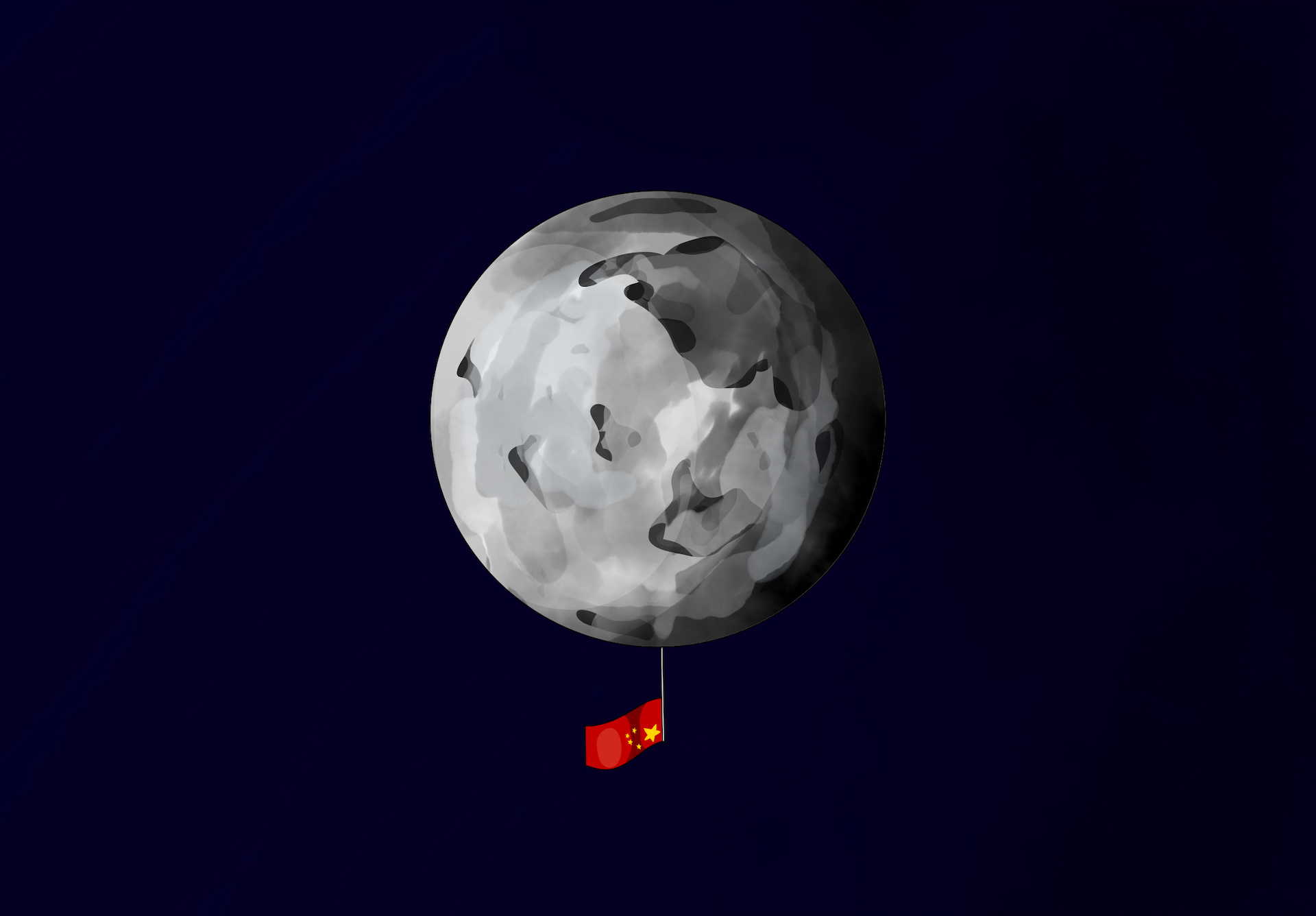China invites the world to join its mission to explore the Moon
China is now accepting bids to join Chang’e-8 (CE-8), the country’s lunar exploration mission. It’s both space diplomacy and China’s latest push to become a leading space power at a time when countries are racing to land on the Moon.

China opened up a key lunar mission to global cooperation in its latest effort to become a major space power.
Yesterday, the China National Space Administration (CNSA) announced an invitation (readout in Chinese, PDF in English) for international cooperation for the Chang’e-8 (CE-8), the country’s lunar exploration mission, at the 74th International Astronautical Congress in Baku, Azerbaijan.
The CE-8 mission is scheduled to launch around 2028 to help form the basic structure of China’s International Lunar Research Station (ILRS) together with the Chang’e-7 (CE-7) mission in 2026, which aims to search for evidence of lunar water in the Moon’s south pole. The ILRS is slated to be completed in 2030.
The CE-8 will consist of a lander, a rover, and an operation robot with a total of 14 payloads to carry out scientific exploration, including landing and topography cameras, a seismometer, a Moon-based Earth radiometer and multispectral imager, a soft X-ray telescope, and more.
International partners are welcome to “piggyback” on the CE-8 mission, as long as any stand-alone modules remain under 100 kilograms (220 pounds), and may independently deploy their own modules once the Chinese spacecraft lands, the CNSA said in yesterday’s announcement. Those interested must submit a letter of intent to CNSA by December 31, and the final selection of proposals will be announced in September 2024.
“Preference will be given to international cooperation bids at mission-level involving interaction between different spacecraft and joint exploration, development on robots with basic lunar surface operation capabilities, complementary scientific payloads, and other highly innovative scientific projects,” the CNSA said per Chinese state broadcaster CGTN.
China’s next lunar mission, the Chang’e-6 (CE-6), is scheduled for launch in the first half of 2024. It is tasked with retrieving soil samples from the far side of the Moon, and will carry payloads and satellite projects from four other countries and regions, including France’s DORN radon detection instrument, the European Space Agency’s (ESA) negative ion detector, Italy’s laser retroreflector, and Pakistan’s CubeSat.
China’s space station for all
China’s efforts to become a leading space power by 2045 have picked up momentum in the last few years. In January 2022, the Chinese government released a white paper stating that “the space industry is a critical element of the overall national strategy,” and that its development has become a proud symbol of China’s meteoric rise.
That same year in November, the country made the landmark announcement that its Tiāngōng 天宫 (“heavenly palace”) space station had been completed. The addition of the third and final module wrapped up China’s decades-long effort to build its own space station, which intensified after it was excluded from the U.S.’s International Space Station (ISS) in 2011 over concerns about the Chinese space programs’ ties to its military.
“We welcome astronauts from other countries to carry out experiments on the Chinese space station,” Lín Xīqiáng 林西强, the deputy director of the China Manned Space Agency, said in August while announcing signed cooperation agreements with other countries at Tiangong.
A global race to the Moon
China is one of a slew of world powers — including India, Russia, Europe, Japan, South Korea, Israel, the UAE, and the U.S. — that are taking part in a new lunar space race.
Currently, China is one of only four countries that have managed to make successful unmanned Moon landings, following the U.S.’s and Russia’s first missions in 1966. India landed its first lunar spacecraft in August, just days after Russia’s first lunar mission in 47 years spun out of control and crashed into the Moon. Last month, Japan successfully launched a rocket with a lunar lander in its fourth attempt this year.
In June, China announced official plans to put a person on the Moon by 2030. No human has set foot on the Moon since the U.S. conducted its historic Apollo missions in the 1960s and 1970s, becoming the first and only country to do so.
The U.S.’s National Aeronautics and Space Administration (NASA) has also announced a similar plan, known as the Artemis program, to put people back on the Moon by 2025, though it has run into delays.







